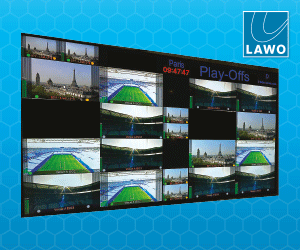In an exclusive interview with Vijaya Cherian, David Sternberg, Head of Media at Manchester United, speaks about the clubs recent partnership with Saudi Telecom Company How long have you been associated with Manchester United? I am relatively new in this role, having joined Manchester United a year and a half ago. I have been in […]

In an exclusive interview with Vijaya Cherian, David Sternberg, Head of Media at Manchester United, speaks about the clubs recent partnership with Saudi Telecom Company
How long have you been associated with Manchester United?
I am relatively new in this role, having joined Manchester United a year and a half ago. I have been in sports media for 15 years in the US, first with Fox Sports and then with NBCUniversal. I have a background in broadcast coverage of global sport, and more recently, there is more emphasis on digital platforms. My mandate at the club is to grow our media assets and make them into a meaningful contributor to the club.
What are your plans for the Middle East region?
The Middle East is a very important region for us. Some key steps in growing our presence in the region is to grow the distribution of Manchester United TV, which is our clubs TV channel. With this new a partnership with STC, the channel is now available on STC’s Invision IPTV platform, which means our fans in Saudi Arabia will be able to watch the channel and follow the team much more closely. Also on the agenda is to develop more digital channels for Arabic speakers. We have introduced the Arabic language version of our website as well as our Twitter feeds in Arabic. In addition to this, we produce content in Arabic for Facebook. We are also in talks with other social media portals to establish a presence on them.
Is your deal with STC exclusive?
The rights granted by Manchester United to STC are exclusive to its territories in Saudi Arabia, Kuwait and Bahrain. Our partnership covers these territories in the Middle East. Meanwhile, we are talking to other operators in the UAE and other parts of the MENA region about complementing the distribution deal.
Sports is such a huge revenue generator. How do you plan to leverage the real power of sport?
Sport is important to media in general and TV in particular. Its the only programme that is DVR-proof and Netflix-proof, and it has the power to aggregate massive audiences. This is a great development from our perspective because we compete in the Premier League arena, which is, by far, the most widely viewed football competition in the world. We participate in the growth of revenue streams by licencing live Premier League games. The role of my department is to match that rate of growth, if not exceed it.
Can you share some statistics?
We have the biggest club football website. Our website receives 2.2 million unique visitors per month. We have 60 million fans on Facebook and our Twitter followers are close to 4 million. This is a great impetus, considering that we launched our official presence on Twitter just last July. More importantly, we have the highest levels of engagement of any football club and the number of posts that are shared or liked. Within this region, in Saudi Arabia alone, we have 3.4 million fans and followers. The ratings for our matches in this region are very high. We are excited about being exposed to a new group of fans subscribed to the Invision TV platform, which our partnership with STC will offer.
Are you creating any new platforms?
We have a couple of things in the pipeline from a product development standpoint. One of the things we are looking at very closely is creating content for global messaging apps such as WhatsApp and VChat. We recently launched online in Japanese and Thai. We are also looking at developing different types of devices, not just phones and tablets but also gaming consoles and set-top boxes.
What are the challenges you face in your current role?
Our objective is to ensure that we create content that is unique, exclusive and relevant to Manchester United fans around the world and is accessible to them in their language and the types of devices they use. It should be valuable enough to them that they spend time on it and potentially, money. To achieve
that, we have to work hard on the football side of the company and offer more value to our fans.
What, according to you, are the latest trends in technology driving sports?
Anything portable and mobile is driving sports these days. The out-of-home viewing is close to 20% of audience measured at home watching our live games. We have done some research with a few companies to look at that in greater detail and have observed that during a live match, the usage of our mobile apps is seven times higher than the rest of the week. Giving a second screen experience to the audience is really important.
What are the trends within sports in terms of formats and content?
Technologically, 4K is coming up in a big way. We have just upgraded to HD, but will be there sooner rather than later. The attention span of viewers is getting shorter. In order to cater to that, we do short-form video clips, about 30-second duration or even less. It is critical to ensure that our programmes are relevant to different devices.
Region-wise, what are the differences in demand between, say, the US and UK and the Middle East?
Live sport generally is very powerful, no matter where you go. Here, its a premium product distributed in multiple territories. If you look at the big players in sports, in the MENA region, they tend to have a pan-regional focus, which is not the case in the UK. In fact, in the US, you need to have a sub-regional focus, given the size of the country. They use very powerful dedicated networks that cater to local markets like Los Angeles, Chicago and so on.
The media is organised a little bit differently here because of the different ways in which the content reaches the audience. Satellite TV is widespread in the MENA region and pay-TV is relatively small compared to Europe or the Americas. The region doesn’t have a robust advertising revenue stream, unlike the States.







































































